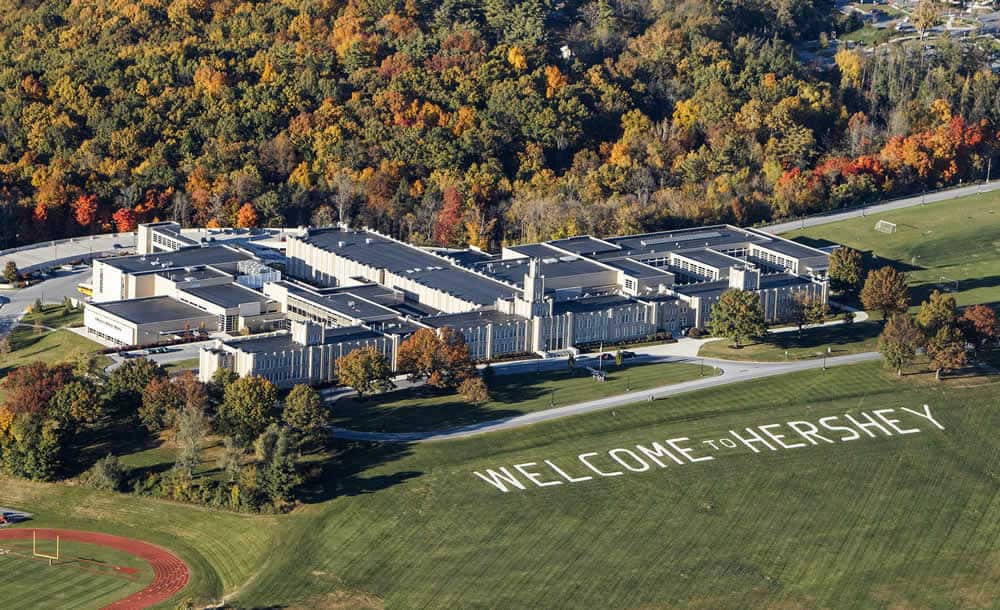
Milton Hershey School
Milton Hershey School
Earlier this month, a New York Times reporter named Andrea Elliott published a book, Invisible Child: Poverty, Survival and Hope in an American City.
In the book, Andrea delves into the life of a family: Chanel, the mother; Supreme, her husband; and her seven children. In 2012, the family resided in a single room in the Auburn Family Residence, in Brooklyn, New York.
Andrea started her investigative reporting on the city’s poor and destitute by drifting around the Auburn’s front door. In October of 2012, she met Chanel, whose seven children would follow her out the building and down the sidewalk. The family soon let Andrea into their home, via the fire escape.
In dismay, Andrea stared at what these seven kids endured: mice, cockroaches, mold growing up the walls, bed bugs, junk food, and most astonishing, a lack of access to federal resources that could help.
Andrea though was most taken by Dasani, Chanel’s oldest, an 11-year-old girl, whom Chanel named after the bottled water company. Dasani changed baby’s diapers, cooked a breakfast for her siblings, made them sack lunches, and walked them to the bus stop or to school.
She tried to pull the family together, to function as normal as she could, and yet, Andrea Elliott wrote, “The family is a picture of chaos and love.”
An exhausted Dasani admitted to Andrea that she often fell asleep or daydreamed in her classes, or skipped school. She missed 52 days of school her seventh-grade year. She said, “I never did my homework. I was always a D or an F.” When boys called her names, she hit them hard with a fist.
Why was this family so poor, so destitute? First, Andrea Elliott pointed to the drug addiction that extended back generations in this family. Chanel’s mother had a crack cocaine addition. But then Andrea learned that Dasani’s great-grandfather was a World War II veteran.
After the war ended, when he was back in the city, he faced a form of iron-clad racism that kept him “from securing a union job or buying a home. The exclusion of African-Americans from real estate laid the foundations of a lasting poverty that Dasani would inherit.” Without a home, life for anyone is hard.
Andrea spent fourteen months observing the family. Then, in a series of five articles that appeared, with photographs, on the front pages of the New York Times in December 2013, Andrea described Dasani’s life. In an instant, Dasani was a celebrity, known across the city.
Money poured into the newspaper, earmarked to help the children exit their poverty. Someone mentioned to Dasani, that she should apply to the boarding school, the Milton Hershey School in Hershey, Pennsylvania. She did, was accepted, and began to attend classes there late in January 2015.
Milton Hershey, the candy maker, and his wife left the bulk of their massive fortune to a trust that established a boarding school in 1909, that was intended to rescue children from poverty, by providing them an exceptional education, superior health care, and a caring home life.
In 2015, when thirteen-year-old Dasani arrived, there were some 2,000 students, pre-kindergarten through twelfth grade. The school boasts of some 9,000 graduates. Officials allowed African-American boys into the school in 1968, and girls in 1976.
The campus covers more than seven thousand acres, in farm country, eighty miles northwest of Philadelphia, and thirty miles north of York and Lancaster.
Officials are proud of their campus. They point to: “203 buildings, six swimming pools, animal barns, a 7,000-seat football stadium, 2,315 student computers, an ice rink,” and a series of group homes, each with houseparents who oversee eight to twelve children.
The student body is about 39% white, 32% African-American, and 18% Latino. Because only low-income families can apply, the average family income is now at $23,574.
The carrot on the stick is that if a student graduates from Milton Hershey School, he or she receive a $95,000 scholarship to attend college. Andrea Elliott though discovered that officials either expel one in ten students for misbehavior, or the student chooses to drop out and return home.
An amazed Dasani stared at what the school was offering her: a selection of clothes and food, tutors to help her succeed in class, free health care, recreational opportunities, and personal safety. Unlike the Auburn, there were no knives and guns outside to terrify her, when she walked out the door.
Andrea Elliott writes, “The school’s staggering endowment—valued at more than $17 billion—provides the amenities of a top university.”
Now enrolled in one of the richest middle schools in the country, Dasani has much to learn. How she will adapt to life at Milton Hershey School, we will reserve for next time in these pages.



